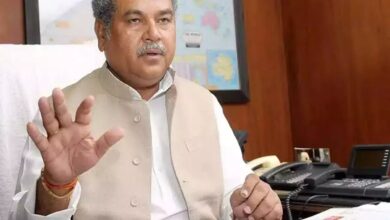Kerala’s salary and pension burden exceeds revenue: CAG
The state’s finances suffered greatly as a result of the government workers’ income and pension being revised in accordance with the 11th Pay Commission’s recommendations, according to the CAG report for 2021–2022.

The report, which was presented to the Kerala parliament on Thursday, said that the state government’s expenditure on salaries and pensions rose by Rs 25,000 crore to Rs 72,678.77 crore, surpassing the state’s own income of Rs 68,803.03 crore.
“Compared to 2020–21, the amount spent on salaries and wages grew by Rs 17,012.62 crore, or 59.14%, in 2021–22. It made up 31.32% of the entire amount of money spent. According to the research, salaries and wages grew from 29.47% in 2020–21 to 39.25% in 2021–22 as a share of revenue collections. Compared to the prior year, there was an increase of Rs 7,955.84 crore in the amount spent on pensions and retirement benefits.
“The revision of pay and pension adopted from April 2021 is the reason for the dramatic rise in salaries and wages, which is 59.14%, and pension, which is 42%. It said that the rise in the financial burden due to salary and pension was Rs 24,968.46 crore. The government was forced to borrow money to cover its committed responsibility since the cost of salaries and pensions exceeded state earnings, it claimed. This had an effect on interest payments as well. Salary, pension, and interest payments accounted for more than 82.29% of total income collections.
According to the study, the state failed to meet any of the goals outlined in the Kerala Fiscal Responsibility (KFR) Act or its Medium-Term Fiscal Plan for the fiscal year 2021–2022. Against the intended 4, the state’s budget deficit to gross domestic product (GSDP) ratio was 5.10. It also indicated that the debt responsibility was growing. With the inclusion of off-budget borrowings from KSSPL and KIIFB as well as deferred liability for government contractors via the Bill Discounting System, the state’s total debt amounted to Rs 3,83,267.15 crore. After deducting the GST compensation of Rs 14,505.31 crore that was received as a back-to-back loan, the effective total liabilities came to Rs 3,68,761.84 crore.
The government would accrue debt and be required to pay higher interest rates if it were to keep borrowing money year after year. The debt is increased by these interest payments alone, it said. The paper states that although higher debt levels hinder capital development and growth, they will also place a “burden on future generations.”
In 2021–22, the central tax transfers were Rs 17,820.09 crore, a 54.15% rise from the year before. This was ascribed to increases in direct taxes of Rs 3,155.69 crore (43.90%) and indirect taxes of Rs 3,104. crore (71%), in that order. Twenty-seven percent of the overall income collections came from the Union government’s Grant-in-Aid.







